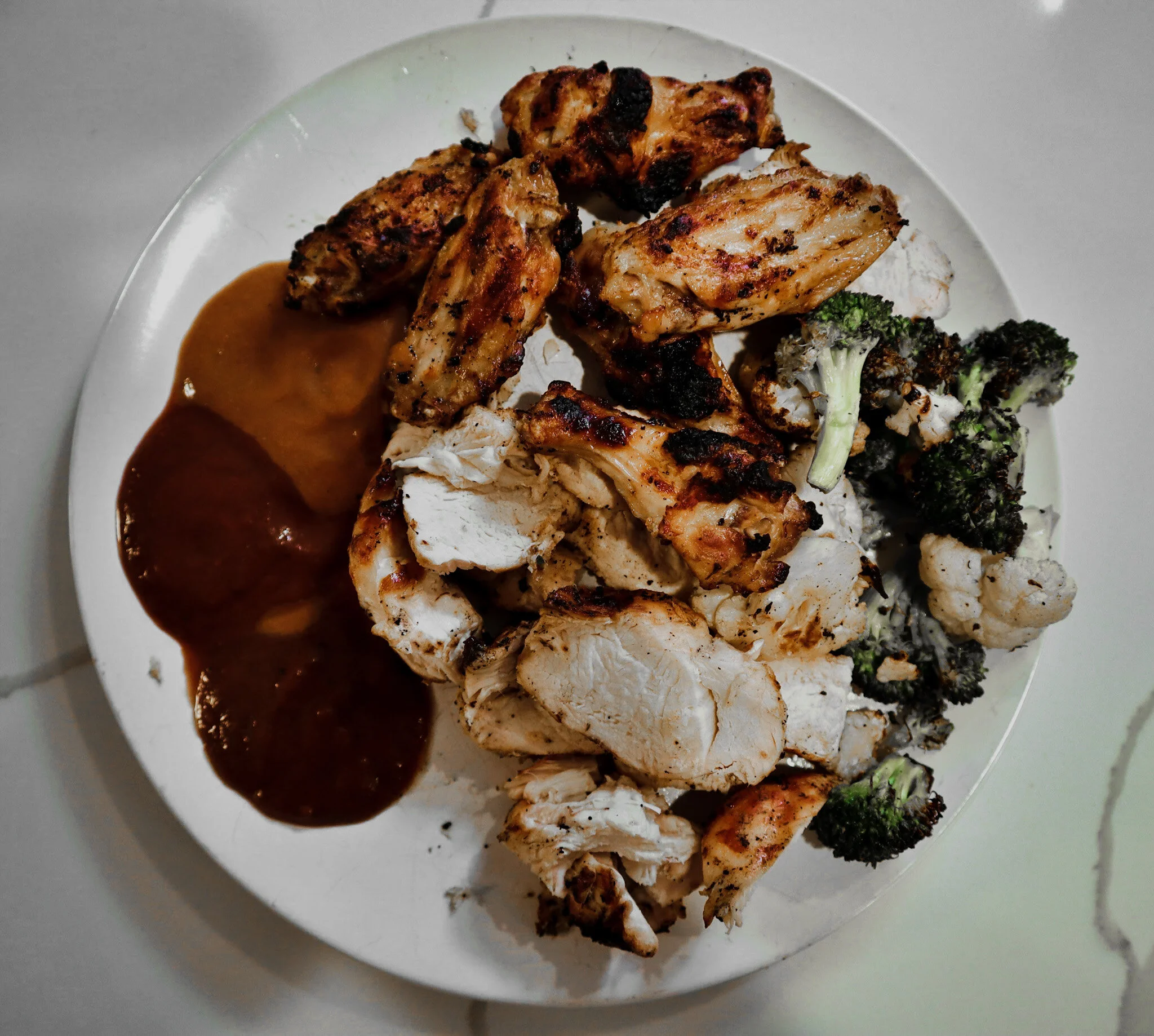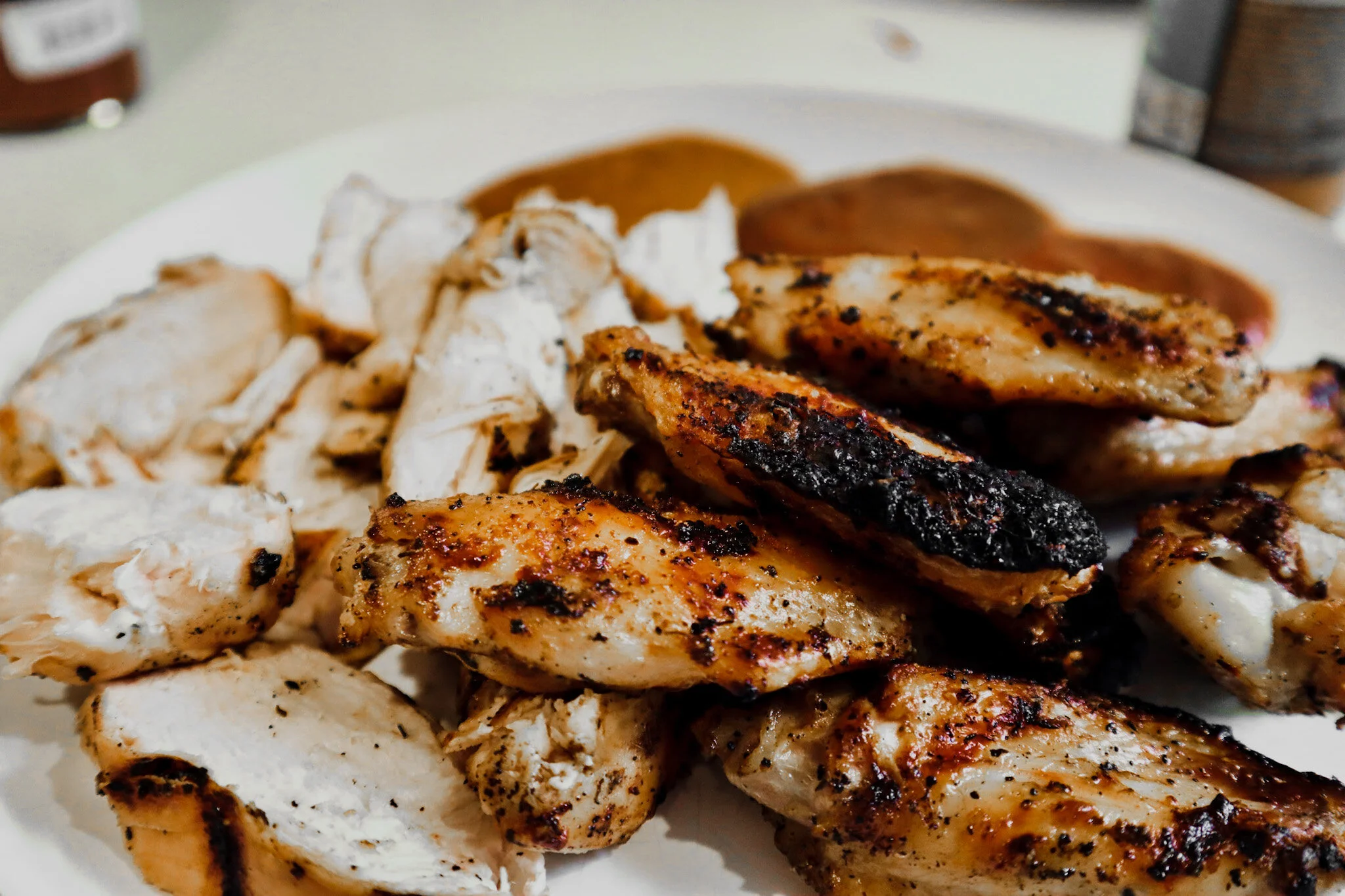Reduce Inflammation, Repair Muscle Protein Synthesis, & Remodel Your Eating Strategy
We have partnered with HIDEF to bring you a framework that is designed to get you feeling better by reducing inflammation, by repairing any existing injuries or deficiencies, by increasing muscle protein synthesis, and by getting you into an overall eating strategy for longevity.
This guide is designed to be followed, beginning to end, for a minimum of 2 weeks but can take you as long as you need or want. Remember to listen to your body, seek medical advise as you feel is needed, choose a nutrition guide that works best for you (this is just one option), and reach out to AC or HIDEF’s certified nutritionists with questions.
First! Let’s calculate your energy needs! This is a beneficial number to know so you have an idea of what your body needs.
Let’s use the Haris Benedict Formula to calculate BMR and then we will times your BMR by an activity multiplier to get your energy needs (calories needed) per day.
Female = 65 + (9.6 x body weight in kg) + (1.8 x Height in cm) – (4.7 x Age)
Male = 66 + (13.7 x body weight in kg) + (5 x Height in cm) – (6.8 x Age)
Find your multiplier below in the bulleted list. *Most people fall in the Sedentary & Lightly Active lifestyle category.
Sedentary Lifestyle (little or no activity, desk job) = 1.1 Activity Multiplier
Lightly Active Lifestyle (light activity, some of the day standing or walking) = 1.3 Activity Multiplier
Moderately Active (moderate activity levels, on feet most of the day, street sales person) = 1.5 Activity Multiplier
Very Active (hard daily activity or exercise e.g. working long days on a building site) = 1.7 Activity Multiplier
BMR x Activity Multiplier = Total energy needed (calories) per day
Now you have your energy needs (total calories needed) per day! This is how many calories your body needs to maintain your energy needs. From here you can maintain these calories, reduce calories to lose weight, or add in calories to gain weight. Below, we share ways to do all three of these in a healthy way by creating an eating strategy that works best for your goals!
REDUCE PHASE
In the reduce phase, we are looking to reduce inflammation in your body and get you feeling better overall. If you are tracking your calories, stick with your “maintenance calories” during this phase, while also eliminating the foods below. If you are not tracking calories, just eliminate the foods below as best as possible. The stricter you are, the greater the result with reducing inflammation in your body.
Stick to this as best you can for at least two weeks and use the daily nutrition sheet (attached below) to document how your body feels with the changes.
ELIMINATE:
Alcohol - beer, wine, liquor
Trans Fats - fried goods, chips, bakery products
Processed Meats - deli meat, hot dogs, fast food
Inflammatory Oils - corn, soybean, canola, sunflower, safflower, grapeseed, vegetable
All Added Sweeteners - white & brown sugar, high fructose corn syrup, maple syrup, honey, coconut sugar, agave nectar, stevia, monk fruit, sugar alcohols
Dairy Products - milk, yogurt, cheese, cream from cows, goats, or sheep
All Grains - wheat, barley, rye, rice, quinoa, corn, oats
REPAIR PHASE
The repair phase is designed to maximize repair throughout the body by stimulating muscle protein synthesis. Our goal here is to make sure our protein intake is adequate. Protein intake 0.7g-1g per pound of goal body weight is a great place to be. If you are extremely far away from that, don’t worry. Set a manageable goal for the first week and start to slowly build from there. Eventually getting up to at least 0.7g per pound per day.
Here are some protein options to help get your protein up (all items below have 25 grams of protein):
4 eggs
1 cup Greek yogurt
1 cup cottage cheese
3oz chicken breast
4.5oz salmon
3.5oz steak
3.5oz ground beef
8 medium shrimp
3.5oz Seitan (vegan)
1.5 cups chickpeas (vegan)
1 cup lentils (vegan)
5oz tempeh (vegan)
1 ¼ cup tofu (vegan)
1 2/3 cups black beans (vegan)
If you are tracking your calories, next you’ll want to customize your calorie intake based on your goal:
Weight loss: Subtract 300-500 calories from maintenance
Maintenance: Leave the same
Muscle Building: Add 200-300 calories from maintenance
REMODEL PHASE
The remodel phase is just what it sounds like. We are remodeling your current eating strategy with everything that works and adding in the proper structure for performance and longevity. We will also start adding back in the foods we originally eliminated in the REDUCE phase. You may choose not to add anything back into your diet but if you did want to, now is the time. We recommend not adding back trans-fat or added sugars. If you want to add in grains or dairy, feel free, just be sure to document how you feel on the daily sheets (attached below). This information will help you create a customized eating strategy for your long term success.
What a balanced meal looks like:
Below are instructions on how to create success meals that will become staples to your eating.
Centered around protein. Figure out how many grams you need for each meal and this will dictate your portion size.
Add a carb/ veggie/ fruit.
As many veggies as you’d like.
Fruit optional. Limit to 1-2 servings.
Add a Fat source. Fats are the most calorie dense, therefore you don’t need a ton. Shoot for about a thumb size for each meal.
Lastly, add a flavor, sauce, and drink.
Here are some sources:
Creating Success Meals:
You now have the framework for creating a balanced meal. It’s time to create a few of your own that you enjoy and can go back to consistently. These are the types of meals that you know you enjoy eating every time you have them. They are also those meals that take little to no prep and minimal cook time for when you are really hungry after a long day.
Here are a few examples:
Ground turkey, sweet potato, avocado
Ground beef (grass fed), black beans, salsa, avocado, romaine lettuce
Ground meat (any type), cabbage slaw (from a bag), onion, garlic, coconut aminos, reds hot sauce
Salmon, asparagus, spinach salad
Steak, black beans, avocado, spinach
Chicken sausage, baked broccoli, yams
Chicken, broccoli, apples and nut butter (yeah, you read that right)
***Use this sheet to track your nutrition over the next 2 weeks.
Brought to you by Zach & Mitch from HIDEF
Learn more about Zach & Mitch on our About Page
Engage with them on Instagram @hidefseattle
Find out more about HIDEF Seattle
Email them with your questions at zach@hidefseattle.com & mitch@hidefseattle.com
“Add positivity to the world!”






